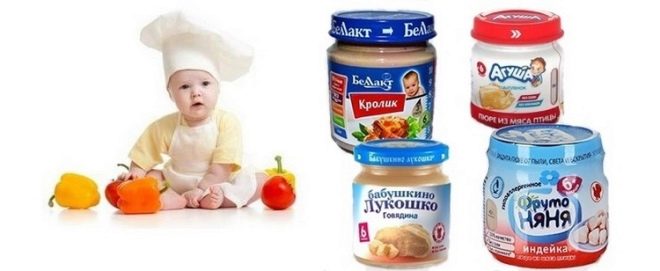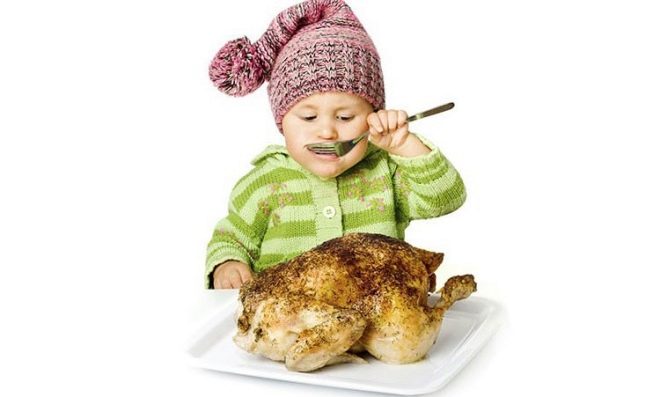What if the child does not eat meat?
In order for a child to grow up normally, not be ill and fully develop, his nutrition must be balanced. In the first months of life, it is very simple to provide for the needs of little babies with the help of breast milk or an adapted mixture. Further, from the age of 6 months, the baby begins to get acquainted with the supplements, its menu expands. But this does not always happen without difficulties - the kids refuse some products. Most often meat falls into the doghouse.
Causes of failure
Meat lure appears in the diet of infants at 8-9 months. But many mothers are faced with the fact that the crumb refuses to eat meat or spits out food as soon as she feels the new taste. This happens for various reasons.
- The child does not like the appearance of meat puree or its taste. When a baby begins to be interested in food from her mother's plate, he prefers products that have a more attractive look and smell, for example, pieces of fruit and vegetables. But the taste, color and aroma of meat, many toads are not very attractive.
- The baby has few teeth, so chewing meat is hard for him. This reason often causes dislike for certain meat dishes, such as steam cutlets or boiled meat pieces, while the baby chops meat finely. As soon as mum tries to accustom to pieces, the peanut refuses.
- A child has an intolerance to certain types of meat or an allergy to animal proteins. With such problems, even after a small piece, a rash, nausea, upset stool can occur.
Older children, for example, in 2-3 years one of the reasons for not wanting to eat meat is also an awareness of how it is received. When a child connects the cows, hens and rabbits he saw with his grandmother in the village with what was served to him on a plate, he may refuse to eat an animal because of pity for him.
Other reasons for refusal include poor health, too large a portion, lack of appetite, heat (in the summer you want less meat).
The benefits of meat dishes
Meat and dishes prepared from it are a source of protein with a complete composition of amino acids. From such products, the child will receive building material, which will become the basis for the synthesis of immunoglobulins, hemoglobin, hormones, muscle fibers, enzymes. Fats derived from meat are also useful, because they are represented by various fatty acids, among which there are those that are not synthesized in the human body (linoleic, arachidonic).
In addition, meat dishes include a lot of micro and macronutrients. They contain a lot of iron, represented by the most digestible form (heme iron), as well as calcium, magnesium, zinc, phosphorus and cobalt. Another plus of meat dishes is their dense structure, which stimulates the chewing apparatus.
In order for the jaws to develop normally, the teeth are healthy, and the digestion is not disturbed, the child must learn to chew food, with which meat products cope perfectly well.
What to do in case of failure?
First of all, one should not make a major problem out of unwillingness to eat meat. In most cases, it can be managed without panicking and not forcing the baby to try meat dishes forcibly. First, consider the age of the toddler. If this is a baby, the basis of which ration continues to be mother's milk or a mixture selected by age, then there is no special need for meat dishes.
At the age of 9-12 months, meat lure is designed not to saturate the children's body with proteins, vitamins and trace elements, but to introduce the baby to new flavors. Therefore, attempts to teach the baby to meat should be careful and not too persistent. The desire to get the child to try what he does not want can lead to quite the opposite effect.
If the child normally reacted to the meat, and then suddenly stopped eating it, there is no need to panic either. With the growth of addiction in children change, it is absolutely normal. Firstly, favorite dishes cease to be fun, they are replaced by another food, which is more necessary for the development of the organism at a specific stage. Often in such cases, after a while the child returns to his favorite meatballs or meatballs, or else begins to eat meat in another form.
Here are some more tips on how to teach a child to eat meat if it just does not like it.
- Make meat lure more diverse. For example, if a baby refuses meat puree cooked at home, you can offer ready-made canned food that is produced specifically for baby food. If the crumbs did not like the products of one manufacturer, you can buy other meats or jars of another company.
- Offer meat cooked in different ways. Many children do not like meat dishes because of the fibrous structure and excessive rigidity, therefore, for greater softness, it is recommended to soak the meat for several hours and then cook under a closed lid over low heat. Braised, steamed or baked dishes can be an alternative to boiled meat. In addition, the child may like multicomponent dishes, such as dumplings, cabbage rolls or pies.
- Cook with the baby together. Many children will like to form meatballs and meatballs together with their parents, and then try the result of their work. In addition, such a pastime will help to spend more time with the whole family, which improves relationships.
- It is interesting to arrange dishes. If the food looks attractive, you want to eat it faster. Perhaps a child of 5-7 years will give up the usual piece of meat, even if it is tasty, but will agree to a chop decorated with a pretty vegetable face.
- Show by example. Kids often like to copy the actions of adults. Therefore, if mom and dad eat meat regularly, then the child will be interested and risk to try something new.
If the crumb with all your tricks is still cool to meat products, it does not matter. His diet will remain balanced and beneficial even without meat.
It is only important to provide all the necessary nutrients from other foods. For example, you can try to replace meat dishes with fish, if it is not allergic.
Fish dishes contain easily digestible proteins, omega-3 fatty acids, calcium, iodine, B vitamins, zinc, phosphorus and other compounds. In addition, they are quite diverse, but many kids refuse them in such cases:
- afraid to choke bone - the problem can be solved by buying fish fillets;
- repels peculiar smell - since it is mainly found in river fish, you can offer your child a sea fish.
Proteins that are in meat and fish cannot be completely replaced by vegetable food, but mothers can not worry if there are other sources of animal protein in the menu of a daughter or son, for example, eggs and dairy products. Of these, the child will also receive daily dose of vitamins D, A, B12, iron, calcium and other elements.
As for vegetable proteins, then add them in large quantities in the diet of the child is not worth it. Many of their sources are not recommended at an early age (nuts, beans), cause colic when consumed in large quantities (spinach, cabbage) or worse digested.
The following video is waiting for you recommendations Dr. Komarovsky, if your child refuses meat.



















